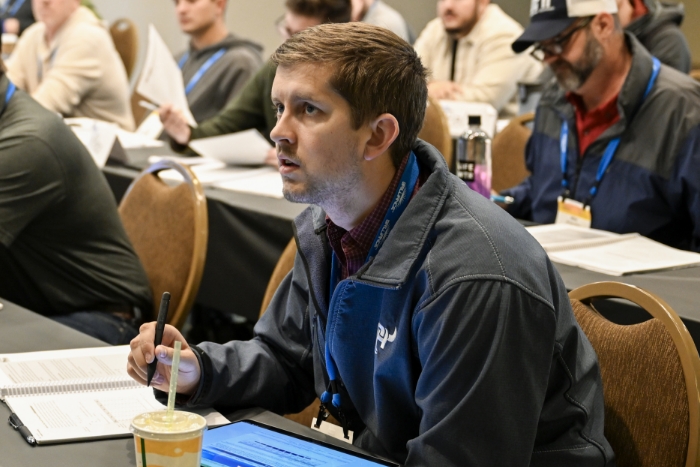In most areas, irrigation system activations have been done or will be done soon. With weather extremes becoming more common, startup season is getting trickier — even with proactive schedule management. There are still a lot of clients who will wait until the last minute to call, which means there won’t be enough hours in the day to get them finished. Ideally, we would have the time to thoroughly inspect every system and correct any deficiency; the reality is that we get them activated, flag or list repairs, and schedule a follow-up visit to complete them.
System inspections vary widely, but the goals are usually similar. They should involve a checklist that detail and catalog the site, landscape and system. They will also capture the information on the operation of the system as a whole and by zone and will provide the basis for making recommendations for maintenance, upgrades and scheduling.
Some inspection systems are as simple as a sheet of paper on a clipboard with a pencil. This can be effective for collecting the right information but makes it harder to manage that information later on. More digital options are available that will allow the inspection to be done with a tablet, mobile device or digital notebook. They can also be more easily transferred into possibly proprietary inspection software, business operating or accounting systems, or even some irrigation controller platforms. The key is to collect the right information, be able to access it and use it effectively.
The Irrigation Mastermind was created to allow contractors in our industry to find ways to engage with each other through in-person and remote meetings.
Collecting information about the landscape is important because this helps answer questions about why and how efficiently we water. Inspection technicians need to have appropriate training to be able to make this evaluation. Turfgrass health can be measured by density, aesthetics, any insect or disease problems and, most importantly, root depth. Root depth will tell us about our watering efficiency, and the process of removing a core sample to find this information will also help provide some clues on the soil type, compaction and depth of thatch. Landscape plants can also be evaluated by similar criteria and techniques, as plant health problems can be caused by watering too much as well as too little.
Inspection of the system can vary dramatically in intensity, but there are a few key areas that are important. Obviously, the operation of the equipment on every station and any needed repairs, maintenance or issues related to improper design or maturing of the landscape need to be recorded. There are two other areas that sometimes get overlooked or minimized, and those are a quick assessment of the hydraulic and electrical performance of the system. A pressure reading at the water source is a good reference point. Ideally, a reading on each zone, but at least on any when a hydraulic problem is suspected. Also, a quick check of the resistance or amp load on the wire path from the controller with a multimeter of the controller diagnostics can provide useful information on potential problems lurking.
So, what do we do with the information? A report for the system owner or manager is valuable to help them understand the condition of the system, anticipate future needs and costs, and provide them with more value with your expertise. Additionally, the report will include recommendations for repairs, maintenance and upgrades with associated cost. Internally, the information needs to be filed for access, ideally electronically. This information will be used by future technicians when managing the system, but it also creates a pipeline for future work when needed.
An effective process for irrigation system inspections is key to managing and improving relationships with your clients and their irrigation systems. It also improves the operations of your business and increases your sales revenue and profitability with a pipeline of opportunities. Your technicians need to be fully on board with an understanding of the importance of the process for inspections, and they must have the systems and skills to complete the inspections productively and effectively.
Christopher Pine, CLWM, CID, CIC, CLIA, CIT, MCLP, is a principal of IrriTech Training and the president of BluGreen Solutions in Pocasset, Massachusetts. He can be reached via email.





